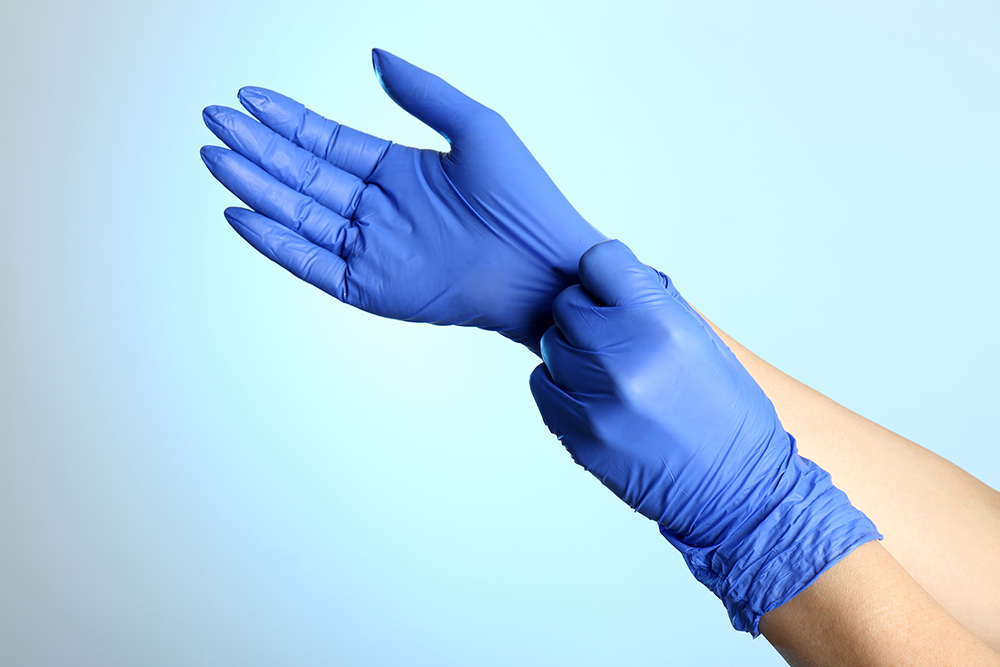After gloves go through the production process—formers dipped in solution, dried in high heat, rinsed in a chlorinated solution (in the case of latex), dried again—their interior needs to be finished.
This process makes it easier to pull on and remove gloves. Without interior finishing, gloves can stick to skin and cause a struggle to get them on or off.
There are several ways to finish a glove, including chlorination, polymer coating, and (in decreasing use) powdering.
Chlorination
The process of chlorination reduces the surface tackiness of the glove, gives it a softer texture—and cuts the amount of latex proteins, thus making them less likely to aggravate latex allergies. (It must be noted that no amount of chlorination, even the double chlorination used for our heavy-duty Gloveworks Industrial Ivory Latex Gloves (ILHD), will eliminate all risk of allergic reaction to latex.)
Manufacturers wash gloves in chlorine gas or a solution of hypochlorite and hydrochloric acid. Gloves are extensively rinsed to prevent the chemical from further interacting with the glove. This method was developed for latex gloves, but it is also used with some nitrile gloves. Gloveworks Industrial Orange Nitrile with Raised Diamond Texture (GWON) and other gloves in our Raised Diamond Texture suite are finished with chlorination.
One thing to keep in mind is that chlorination slightly reduces the shelf life of gloves because the chemicals break down the glove material.
Polymer coating
Another method manufacturers use to make gloves easier to don is polymers, such as silicones, acrylics, and hydrogels. The polymer coating has less surface friction than the glove material, which makes it slip on the hand more easily. Polymer coatings are odor-neutral and promote consistent, even color.
The polymer is generally applied while the glove is still on the former. Gloveworks Black Nitrile (GPNB) and all of our vinyl gloves are polymer coated.
Powdering
For years, powdered gloves provided the best means of making gloves easier to don and doff. They also had the added benefits of absorbing sweat and allowing gloves to go on more easily over damp hands.
The first powders were composed of spores derived from an evergreen plant called lycopodium, and club moss. In the 1930s it was discovered that the powders were causing inflammation and scar tissue in surgical wounds.
A switch to talcum followed, but before long it was found to cause some of the same reactions as spores. In 1947, food-grade cornstarch was introduced and became the industry standard. It remained for nearly 50 years until studies revealed its adverse effects.
Few gloves today use powder. The FDA in 2016 proposed a ban on most powdered gloves in the U.S., which was implemented in January 2017 on all exam-grade gloves. There remain some industrial-grade gloves containing powder, but it is being largely phased out. In addition to the health concerns, powder can leave behind a messy residue that can damage painted or varnished finishes.
Finishes allow users to change gloves with ease, reduces somewhat the risk of aggravating latex allergies, and ultimately makes disposable gloves easier and more comfortable to wear.





